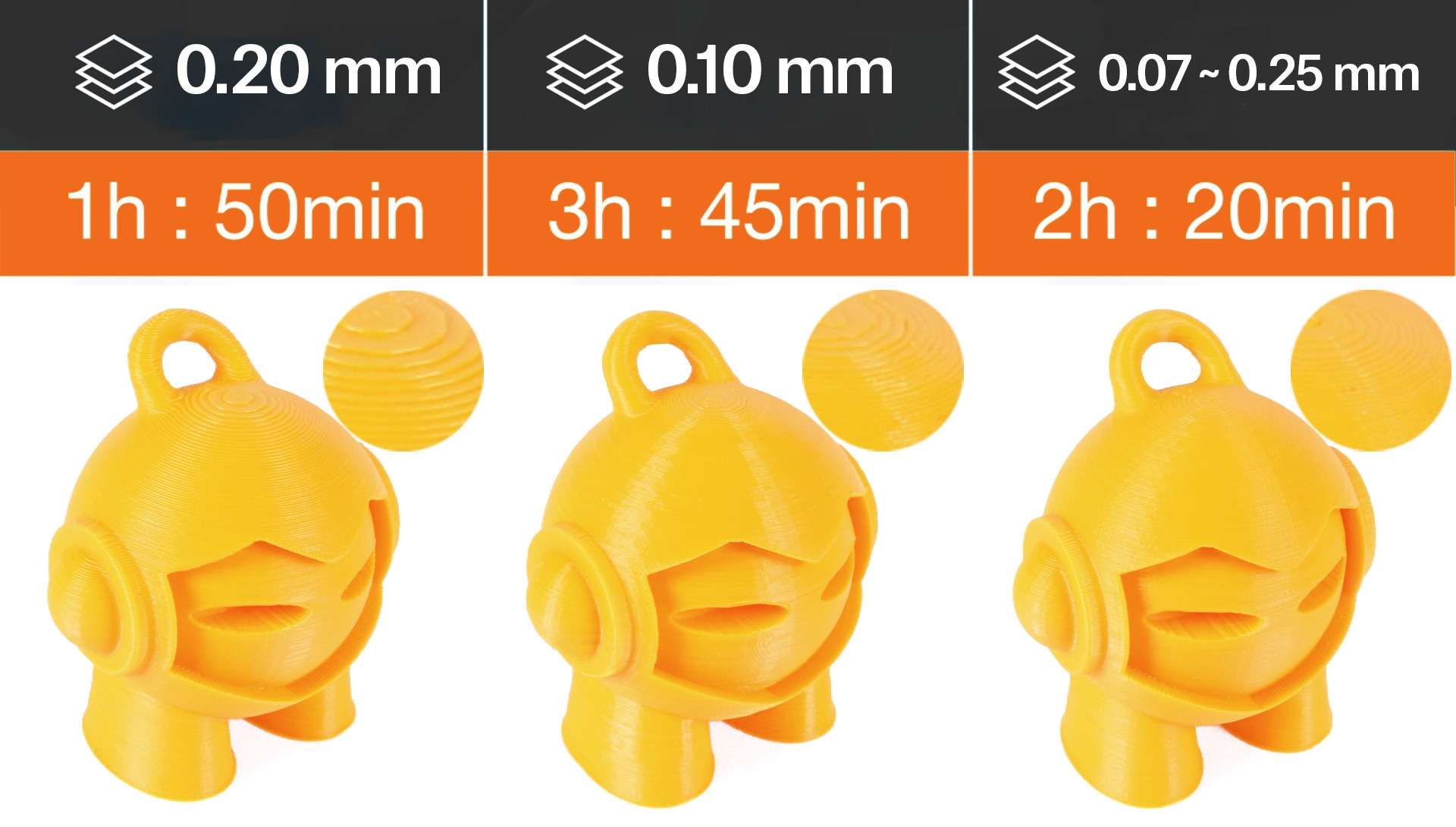Crafting a standout design is one of the most thrilling parts of product development, surpassed only by the final 3D print. Designers and engineers understand that the 3D design process is full of trade-offs-balancing aesthetics, strength, and costs. However, understanding layer height can simplify planning during the modeling/slicing process and ensure you upload a 3D model with quality metrics.

Layer Height: A Crucial Setting
3D printing is renowned for its additive approach, unlike subtractive processes like CNC Machining. In additive manufacturing, the part begins with a single layer applied to the print bed. Layer upon layer is added until the structure is complete. Layer height is adjustable and significantly impacts the properties of the final printed part. Designers often select lower layer heights for aesthetic reasons, achieving higher resolution and smoother surfaces, though this demands more work from the 3D printer, leading to longer print times. Increasing the layer height or thickness usually results in faster print times, higher part strength, and improved mechanical properties.
Layer Heights for Different 3D Printing Technologies
Fused Deposition Modeling (FDM)
Commonly used for its versatility and accessibility, FDM typically operates with layer heights ranging from 50 to 300 microns. Higher layer heights result in faster prints but with visible layer lines, while lower layer heights achieve finer details.

Stereolithography (SLA)
Known for its precision and smooth surface finish, SLA generally uses layer heights between 25 and 100 microns. The lower layer heights yield high-resolution prints perfect for detailed models and intricate geometries.

Selective Laser Sintering (SLS)
SLS is used for producing robust parts without the need for support structures, typically at a layer height of around 100 microns. It’s ideal for functional prototypes and end-use parts, balancing detail and strength.

Digital Light Processing (DLP)
Similar to SLA, DLP uses digital light to cure resin, offering layer heights between 25 and 100 microns. It’s known for its speed and ability to produce highly detailed parts.

PolyJet
This technology jets layers of curable liquid photopolymer, achieving very fine details with layer heights as small as 16 microns. It’s ideal for high-resolution prototypes and models requiring smooth surfaces.

Metal 3D Printing (DMLS/SLM)
For metal parts, Direct Metal Laser Sintering (DMLS) or Selective Laser Melting (SLM) typically use layer heights between 20 and 50 microns. This allows for precise and robust metal components.

Project Requirements, Budget, and Post-Processing
Choosing a lower layer height can increase print time and budget. Trade-offs arise, as some models may not require perfect surface quality, while others do. Strength and durability needs also vary. Post-processing considerations, such as dyeing, tumbling, sanding, or smoothing, may necessitate higher layer heights during printing. Optimizing efficiency is vital for successful 3D printing, whether creating high-performance parts for drones, architectural models for client meetings, or prototypes for product development. Shapeways automatically checks uploaded 3D models for common issues, but the modeling process should refine the design as much as possible to avoid texture or strength problems and address potential vulnerabilities.
FacFox 3D Printing Services
At FacFox, we transform your creative visions into reality with precision and care. Our cutting-edge 3D printing technology and expert team ensure your projects meet the highest standards of quality and performance. Whether you’re creating detailed prototypes, robust functional parts, or custom solutions, we’ve got you covered. Experience the future of manufacturing with FacFox and elevate your projects to new heights.
Ready to revolutionize your 3D printing game? Choose FacFox for unparalleled excellence!